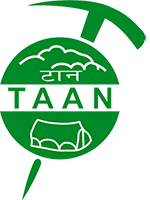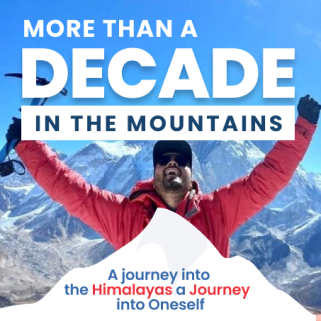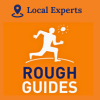.jpeg)
Which Trek Should I do in Nepal?

Which Trek Should I do in Nepal?
Swotah Travel
3681
20, 11 2020
So you have decided to come to Nepal for trekking. But which trek should you choose and should you trek in a private group, with a big agency or with your guide? Let's try to clarify some of the questions in this blog.
First of all, Nepal has some iconic treks! I'm sure you have heard of the Everest Base Camp Trek. This trek takes you into the lap of Mt Everest through barren, rocky terrain with stunning mountain views. You can add on things like Everest: Three High Passes or Gokyo Lake, and of course, you will be flying into the high-altitude airport at Lukla and staying in the fabled Namche Bazaar. This trek is perfect as a part of a small group tour of Nepal, but as it is at a high altitude and a demanding trek, it is not suitable for a family tour in Nepal unless your kids are teenagers with a great sense of adventure.

Then there is the Annapurnas. The Annapurna mountain range is home to several iconic treks, which include the Annapurna Circuit Trek. As you ascend altitude, the lower parts of this trek are lush forests leading into a drier landscape. The Annapurnas are great for someone's first trekking in Nepal, and the lower areas are perfect for family treks with younger children. Poon Hill Trek springs to mind.
For those who are more adventurous or who have already done these more famous, and thus, more busy treks, there are off-the-beaten-track treks such as the Manaslu Tsum Valley Trek or Limi Valley Trek, which take you deep into areas that are more remote and see fewer visitors. As a result, they tend to be more expensive, and it is impossible to trek there without a registered guide.
So, Which Trek is Right for me?
First, take a look at your physical fitness. Browsing through websites, you will see several treks marked as 'easy.' Take this with a pinch of salt! This is the Himalayas! 'Easy' still involves a lot of ups and downs and can entail walking for more than 6 hours a day.
You might then think you should go for a three or 4-day trek. But let me warn you, it often takes 3 or 4 days to get into your stride. So that short trek might feel just as exhausting as that long one.
But if you are of reasonable fitness and take it slow and pace yourself, 'easy' or 'moderate' treks can be tackled by almost anyone.
Aside from personal fitness, when considering which trek to go on, ask yourself what you want to see and experience. Do you want to hike through lush forests and terraced fields, passing and staying in ethnic villages on the way? Or do you want to hike through the desolate desert-like dry landscapes? Maybe attaching crampons and hiking through snow and over high passes is your dream. Nepal certainly caters to a lot of different tastes.
Think also about the best season to visit Nepal. Most people come in the spring and autumn when the weather is at its best. The number of trekkers is at its highest at those times also. If you like snow and don't mind the cold, consider winter for some areas. And remember, some areas, such as Upper Mustang, fall in the rain shadow, so there are possible even in the summer monsoon treks. While Nepal is a safe destination in Asia, consideration should be given to the time of year in terms of flooding (monsoon), landslides (monsoon), heavy snowfalls (winter and early spring), etc.
A great way to decide on which trek is for you is to make a checklist of what you are interested in – wildlife, culture, Buddhism, Tibetan-like landscape, snow, forests, teahouse accommodation, luxury lodge accommodation or camping, etc., then go through this website to see what treks fit your ideal. Then scale down your expectations in terms of length of the trek (do you have 21 days to spend on a trek?), the difficulty of the trek (can you manage a 'demanding' trek?), and cost (remote areas require a high priced permit).

Private or Group Tour?
Having now worked out the area(s) you are interested in, think about your overall experience. Do you love to travel in a big group, ensuring a lot of evening conversation? Or do you prefer a smaller group or going alone with a guide? For my money, traveling in a big group has a lot of drawbacks. You will probably spend most of your time talking to the group members and not spend as much time interacting with locals. And then there are always those people with 'prominent personalities! Those who complain too much or dominate the conversation cannot stand and gaze in silence at the mountains but need to chatter on….
Smaller groups are ideal for getting the best of both worlds. Be able to take in the surroundings fully, talk and meet others on the trail or in the teahouses, yet still have companions to talk with at dinner. Your guide will have more time with each trekker if the group is smaller. And in the season, when accommodation is in demand, you might need to double up with a stranger. So if your group is small, you have someone you already know to share with. On that topic – if your group is small, you will be able to get to know the others more. Life-long friendships have been made on treks!
Smaller groups also have less impact on the environment. Especially if it's a camping trek, imagine a vast group camping. How many are porters, and how much equipment is required? And, of course, the porters always set the camp up. If you are in a small group, it is far more likely you will get to know your porters than feel comfortable offering to help out around camp to get a more involved experience. Imagine 30 people trying to help out in the kitchen tent.
In these times of COVID-19, it is a better choice to go small. It may be that large tour/ trek groups are a thing of the past. We wait and see.
Larger groups may be easy to get lost in. Not lost as in vanishing off the trail! But as in being in the background or left out of a conversation. If you are a shy person, perhaps you don't mind blending into the background in a big group. But that's not ideal. You came to Nepal to experience life as well as the mountains. On the other hand, you might not be able to get those quiet moments to reflect and chill if you are in the middle of a large, boisterous group.
Larger groups will stretch your guide's ability to spend time with everyone. And his ability to relax and chill at the end of the day. Which is also essential on a more extended and more demanding trek.
Going alone with a guide will mean your experience will be different again. You can walk at your own pace, spending more time in one location if you love it and time allows. The cost will be a bit higher, but the experience will also be elevated! But remember that in restricted areas, you need to be two trekkers to get permission to go there.
Luxury tours in Nepal are more likely to be in small groups simply because of the money factor. Heli tours in Nepal are, by their very nature, limited in group size. How about breakfast on Everest? Fly in, eat breakfast and fly out. The ultimate luxury tour!
Off-the-beaten track treks are again more likely to be smaller groups. For example, Swotah's Millennium Trek involves homestays. Staying in real villagers' homes. Naturally, village homes are tiny in size, and we wouldn't want to overwhelm a village and its resources by bringing too many people simultaneously. Also, the whole idea of a homestay trek is to meet and get to know the locals.
So it's up to you. Big group, smaller group ( your friends or family would be ideal, particularly these days) or alone with a guide. Each will provide you with a very different experience.

Choosing the Right Trekking Agency in Nepal
Now you know where you want to go, whether you want a big or small group, so how do you know which trekking agency to choose? There are hundreds of them on the internet. It can be overwhelming!
What Do I Expect from a Trekking Agency?
Get your pen and paper out again. You want the trekking agency to be:
- Experienced (to keep you safe)
- Within your budget (which will depend on the trek you are thinking of too)
- Provide a guide who speaks your language (all speak English, but you may have to request one if you speak another language)
Experience: With the internet, it is not as hard to find out which trekking agencies have more experience. Firstly check they are properly registered. Looking at the TAAN (Trekking Agency Association Nepal) website, you will find a list of registered trekking agencies.
Look at the reviews they have received from past clients.
Check how long the agency has been operating. However, even new agencies can be competent if the team has a long experience with other companies. This is where reviews come in handy.
Safety: Ensure the trekking agencies know what to do in an emergency. Can they demonstrate they have dealt with helicopter rescue in the past? Does the guide carry a GPS tracker?
Cost: You can find many different prices for the same trek. Going cheap is fine if you are doing a lower-altitude trek in a well-established area and don't mind roughing it a bit. Because the cost will also depend on the facilities, they provide you. If you are looking for more luxury accommodation, you get on some (definitely not most) treks. You will pay more. Are you flying to your starting point? More money. Are you getting a bus or private vehicle to the starting point? Again there is a considerable difference in cost between a public bus and a private, more comfortable jeep. Will there be a porter to carry your bag, or are you expected to carry it yourself? It all adds up.
Ask questions: A genuine trekking agency will not mind you asking questions and meeting your guide in advance. Beware the ones who hesitate at this point.
To Sum Up
There are so many options in Nepal. And the best travel companies in Nepal will be happy to advise you on what is available when you want to come and within your budget and fitness level. But do your homework first! It's better you know in advance roughly what you want. You will know yourself whether you want to trek into the lush and ever-changing landscape of the Annapurnas and then take an Everest flight to see the tallest mountain in the world or whether you want to see it more closely from the so-called Everest View Point at Kala Patthar while on the Everest Base Camp Trek. Or perhaps you are a budding mountaineer and want to try your hand at peak climbing on a trekking peak such as Island Peak. And who knows, maybe scale Everest itself on your next trip.

NEWSLETTER SIGNUP
Sign up to receive our trip ideas and travel offers!
Get updates and Exclusive Offers up to 20% Discount









